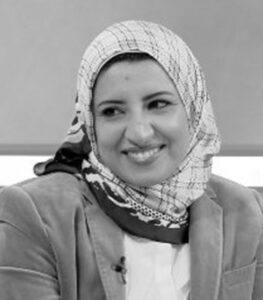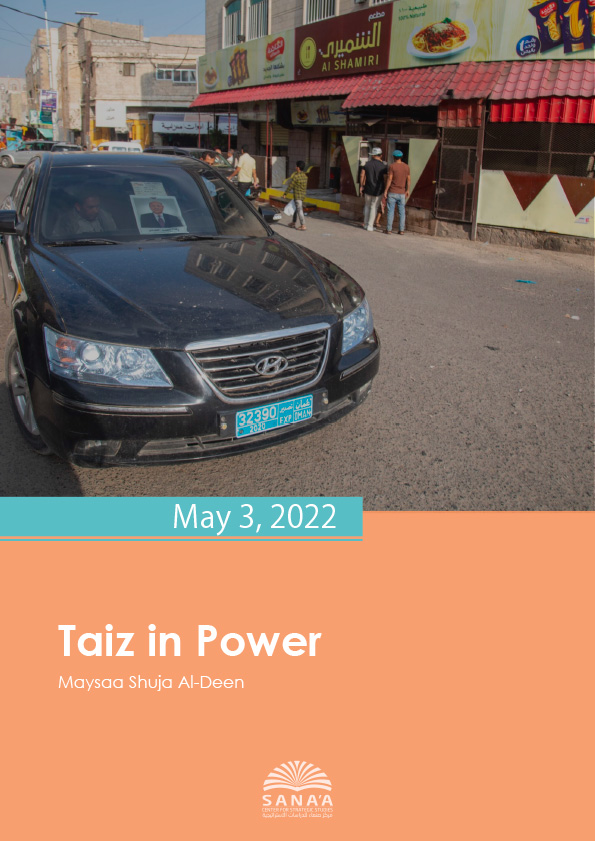For the first time in Yemen’s modern history, the executive and legislative branches of the government are headed by figures hailing from the governorate of Taiz. Rashad al-Alimi was appointed head of the new Presidential Leadership Council (PLC) in early April. He joins Prime Minister Maeen Abdelmalek Saeed and Speaker of Parliament Sultan al-Barakani – all of them Taizis.
This strong national representation for Taiz at this juncture has important implications given the governorate’s unique position in Yemen’s history. While Taiz is politically part of north Yemen, geographically and historically it has always been part of the south. Taiz was the capital of Yemen during one of its most prosperous eras in medieval times, under the rule of the Rasulid Dynasty (1229-1454). It also served as an alternative capital when rulers in Sana’a gave up hope of building stable alliances with the surrounding Zaidi tribes, such as during the second period of Ottoman rule from 1872 to 1918.
Taiz was chosen as the seat of government during the rule of Imam Ahmad after he thwarted the 1948 coup that killed his father, out of fear of a renewed rebellion by the tribes. It remained so until the republican revolution of 1962, when political power returned to Sana’a. It remained the preferred place of residence of President Abdelrahman al-Eryani, second president of the republic, from 1967-1974. During that time, Taiz city witnessed a political and cultural revival while civil war gripped Sana’a.
Taiz’s ties to the south deepened during British colonial rule. The majority of Aden’s population primarily originated from areas of Taiz, especially the Al-Hujariah region, creating an important link between the two centers. Aden’s political culture played a crucial role in spreading modern education to Taiz, producing local politicians and intellectuals such as Ahmed al-Nu’man, Abdullah Abdelwahab al-Nu’man and Mohammed Qaid Seif, as well as prominent technocrats such as Mohammed An’am Ghaleb, Abdelaziz Abdelghani, Mohammed Said al-Attar and Ahmad Abdu Said. Notable Taizi merchant families also arose during that time, such as the Hayel Said Anam and Mutahhar families.
Residents of Taiz perceived a growing sense of marginalization by northern tribal forces in the 1960s following the republican revolution. The murder of Taizi military leader Abdelraqib Abdelwahab during the intra-republican struggle in 1968 was taken by Taizis as a sign of their exclusion. Later, when President Ali Abdullah Saleh began his rise to power, he generally kept Taizi figures out of important military and decision-making positions, despite his previous post as leader of the Taiz Military Axis. People like Abdelaziz Abdelghani, who served numerous terms as prime minister, were tokenistic figures in government, while real political and military power lay elsewhere. An early unsuccessful coup attempt against Saleh in October 1978 included military and civilian leaders from Taiz’s Nasserist party.
In South Yemen, figures from Taiz held some important positions within the state, mainly on the technocratic side. However, military posts in the southern armed forces were mostly distributed to individuals from the governorates of Al-Dhalea, Lahj, Shabwa and Abyan. Abdelfattah Ismail, who hailed from Taiz and led the Socialist Party in the south, briefly seized power in 1979, but resigned less than a year later.
Taiz remained a prominent political bellwether after unification. In December 1992, protests over deteriorating living conditions broke out in Taiz and spread to other governorates such as Sana’a and Hudaydah. In 2011, the protests that eventually brought down President Saleh began in Taiz, which in many ways became the beating heart of the popular revolt. During the early stages of the current war, the people of Taiz resisted Houthi forces’ attempts to take the city, confronting them with demonstrations. When the Saudi-led coalition intervened in March 2015, Taiz became a key battleground, as the coalition tried to interrupt Houthi supply lines from the north that ran through the governorate.
Taiz governorate is now fractured by competing political forces and militias. The Islah party has gained a strong foothold after routing rival Salafi forces in Taiz city, while the coast has fallen under the control of Tareq Saleh’s forces. Northern areas, including the Al-Hawban industrial zone, remain under the control of Houthi forces.
Given the fragmented political and military situation in the governorate, what does the appointment of Rashad al-Alimi mean for Taiz? Both Al-Alimi and Prime Minister Maeen Abdelmalek hold doctorates from Egyptian universities. Al-Alimi has held academic and security positions during his career, the most important of which was as minister of the interior in the 2000s, and he is a member of Saleh’s General People’s Congress party. Maeen Abdelmalek is considered an independent associated with younger figures who attained prominence after the 2011 revolution, partly through his strong personal relationship with current Foreign Minister Ahmed Awad bin Mubarak. Meanwhile, Sultan al-Barakani was a figure promoted by ex-President Ali Abdullah Saleh, eventually becoming a leader in the GPC.
As well as their shared origins, Al-Alimi and Saeed are similar in that they do not have an armed force behind them, nor do they rely on the ideology of armed regionalism, despite the current military divisions in the governorate. A presidential council has been created with its members each representing different armed forces, save for the chairman. Yemenis have previously resorted to such a formula when there was a need for neutral, peaceful leadership that would put an end – even temporarily – to armed confrontation between the various forces. Such an arrangement existed with the rise of Hadramawt’s political influence in South Yemen after the war of 1986, despite the governorate not being a center of armed regionalism. Rather, Hadrami influence was necessary to balance and disengage the rival armed axes of Lahj-Al-Dhalea and Shabwa-Abyan, leading to Ali Salem al-Beidh and Haider al-Attas ascending to power in the south.
The current rise of Taiz is similar to the Hadrami situation, as it represents an unarmed cosmopolitan space that poses a threat to no one, deferring to the struggle for power between other forces. But will this rise in influence eventually lead the city to emerge as a cohesive armed force in itself?
The future of Taiz will be impacted by those figures who now hold office, especially the head of the new ruling council. Their actions could help alleviate the city’s division and suffering, or let it continue to fester. Among the worst choices these figures could make, especially Rashad al-Alimi, is to resort to creating patronage networks in Taiz – similar to what ex-presidents Saleh and Hadi did in their home areas of Sanhan and Abyan, respectively –in an effort to protect their position. That path would risk creating new destructive dynamics in a divided city where numerous Yemeni forces have influence on the ground. Fortunately, the city’s history and culture suggest it would be difficult for any party to create the strident regionalist politics that exist elsewhere in Yemen.

 اقرأ المحتوى باللغة العربية
اقرأ المحتوى باللغة العربية
